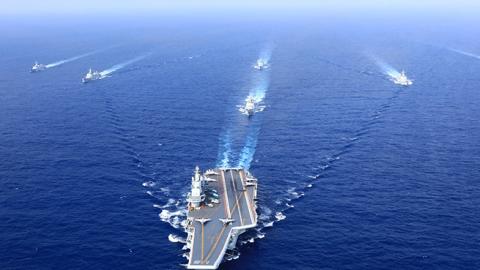Vice President Mike Pence will be meeting with Japanese and Indian Prime Ministers Shinzo Abe and Narendra Modi while traveling to the region on behalf of President Trump for the U.S.-ASEAN Summit and Asia Pacific Economic Cooperation. As the Vice President explained, he is in the region to collaborate with allies and partners and build a coalition of like-minded countries. This will be his first trip to Asia since his October 4 speech at Hudson Institute calling out China for using all political, economic, and military means to advance its power at America’s expense.
Japan and India are the two most important countries in the Indo-Pacific for America. Abe has emerged as the strategic and political leader amongst Asian democracies while Modi is helping India achieve its enormous potential. If Pence can get these two countries on board, then it is really ‘game on’ – and the odds are firmly with America and its allies and friends.
Consider both China’s ambition and the prospect that it may be rising as the loneliest global power in history.
For thousands of years, China was a continental power whose battles were fought predominantly on land between warring tribes and provinces, or else against neighbors with whom it shared a border.
Over the past decade, Beijing has belatedly realized that in a global system dominated by sea-borne trade, superpowers must be naval powers. It is through ships on the surface of the water, and beneath, that Beijing is intimidating the smaller trading nations throughout the Indo-Pacific.
Beijing’s potential problem is over-reach. Unlike America, which has bases and/or significant military assets in countries such as Japan, South Korea, Thailand, and Australia, China only has client states such as Cambodia, Laos, Pakistan and Sri Lanka. For the moment, the People’s Liberation Army (PLA) Navy is not able to base large-scale operations from the territory of any of these client states.
Knowing that it remains isolated and therefore vulnerable, China’s grand strategy is to foment division between powerful American allies and partners, and in the process intimidate smaller regional states into obeisance or else neutrality.
In this context, Japan and India are particularly important. In addition to America and China, these are the two most powerful naval countries in the Indo-Pacific. As things stand, Japan would hold its own against China in the East China Sea while India is more than a match for the PLA Navy around the Indian maritime periphery, including the Bay of Bengal.
When combined with the still preeminent American Navy, China cannot use its growing fleet to coerce others into obeisance in Northeast and Southeast Asia, Oceania and the Indian Ocean Rim. These maritime areas, as it turns out, are the most important areas of the “21st century Maritime Silk Road,” which is part of Chinese President Xi Jinping’s Belt and Road Initiative (BRI). Prevent China from negating its strategic vulnerabilities in these major waterways and Beijing will always think twice about stirring up real trouble in the Indo-Pacific.
Japan and India are important for another reason.
China’s BRI is about developing a China-centric network of infrastructure, supply chains, economic rules, industry standards and even dispute-resolution processes that are shaped and controlled by Beijing, and which exclude America. In the BRI world, China always wins because it makes and breaks the rules. If Beijing succeeds, the Eurasian, Pacific Ocean and Indian Ocean economies enter into a Chinese economic eco-system within which only one winner is assured.
This is antithetical to the American-sponsored system in which nations and firms compete according to agreed rules and laws. When it comes to competition within the former system, it is fixed. In America’s preferred version, trade and economic interaction is tough but fair.
Pence needs Japan and India to stand with him on this. The former remains the most advanced, wealthiest (with a population of over 10 million) on a per capita basis, and most innovative nation in Asia. The latter by virtue of its enormous middle class will be a global consumer superpower in the foreseeable future.
China still needs Japanese and other advanced economies’ knowhow to complete its modernization and Indian buying power to absorb its excess goods. If all three nations – along with the European Union – move in the same direction, they remain in a powerful position to compel China to play by fair and agreed-upon rules.
If, instead, they seek to stand aside and watch the two largest economies in the world slug it out, then China’s divide and rule playbook comes into good use: offer Japan and India some transient economic benefits to draw them into Beijing’s economic eco-system. For example, once inside the BRI eco-system, the cost and difficulty of opting out becomes prohibitive.
The U.S. Vice President has his work cut out for him in Asia. But get Japan and India on our side and others will follow.



















